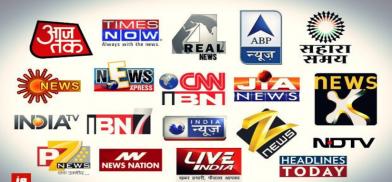When truth-telling is replaced by agenda-setting: Media in an 'illiberal democracy'
India ranked 142nd out of 180 countries in the World Press Freedom Index, 2020, an annual document published by Paris-based Reporters Sans Frontiers (RSF)

India ranked 142nd out of 180 countries in the World Press Freedom Index, 2020, an annual document published by Paris-based Reporters Sans Frontiers (RSF). Recently, International media has frequently paid attention to the growing trend of aggressive and jingoistic news reporting by Indian media. One of the most highly regarded journalists and the US, the national editor of Financial Times, Edward Luce, said that India is now “the world’s largest illiberal democracy,” further adding, “Modi is Orbanizing India,” referring to the right-wing prime minister of Hungary, Viktor Orban.
India used to be a vibrant democracy, and with the surge of news channels, Indians seemed to do what they were best known for, being argumentative. However, something changed significantly in the media ecosystem. The decline of democracy in India is complemented by the decline of freedom of the press.
Marshall McLuhan, Canadian philosopher, whose work is among the cornerstones of the study of media theory, once famously remarked: “the medium is the message.” By this, he meant that a medium through which a message passes by is not completely independent of the message itself, but in fact, the medium has its own agenda, a sort of bias. A medium creates its own epistemology which is different from others and sometimes contrary to the message itself. American author, media theorist and cultural critic Neil Postman argued, “a new medium changes the structures of discourse; it does so by encouraging certain use of the intellect, by favouring certain definition of intelligence and wisdom, and by demanding a certain kind of content - in a phrase, by creating new forms of truth-telling.” Television created that new form of truth-telling. The core job of journalism is truth-telling, however, the form it takes, in turn, affects the truth it chooses to tell.
Liberalization of the economy created a surge in news channels in India. The increasing competition in the 24X7 news format compelled these channels to innovate in their ways of reporting. In a matter of time, breaking news, news tickers, catchy leitmotif, aggressive anchors, and irrelevant news became part and parcel of news channels. These sometimes subtle, most of the time overt changes, created a huge psychological impact on its audience. Imagine watching the news about a rape incident, which most of the time is handled in an extremely cavalier manner by aggressive journalists with heavy background scores guiding you to feel in a certain way when suddenly the journalist announces for a short break followed by a catchy leitmotif.
It all happens in such a bizarre sequence and frequency that it leaves one with no time to process the horrendous information that they are bombarded with. The audience is thus constantly guided about what to feel and how much to feel. The information glut, apart from lowering attention span, also creates a citizen with incoherent thought process having a sense of impotence as to what to do with all the information they just gathered. This kind of news format distracts more than it informs.
Creating an illiberal citizen
Besides, the bias of the medium and the impact it has on the people, there is another way this media surge has affected the working of democracy by helping in the creation of an illiberal citizen. The period of 1990s in India witnessed three different yet interconnected events: the opening of the economy, demolition of Babri Masjid by overzealous Hindutva mobs and the Mandal report’s implementation requiring reservation quota for the other backward classes. The confluence of these three separate events marked the birth of the 'new middle class' in the Indian political scene. The opposition to Mandal, support to the Babri Masjid demolition and the economic opportunity provided by the liberalization, unified the hitherto amorphous group, now called the 'new middle class'. As Leela Fernandes and Patrick Heller put it, ‘The political project of the new middle class represents an opportune-alliance of market-oriented commercial and professional interest eager to exploit new market opportunities and socially conservative elements protecting a range of status privileges’.
Needless to say, this emerging 'new middle class' was also the biggest consumer of television news channels. Both the news channels and the 'new middle class' audience complemented each other and created a vicious cycle where it is hard to define if media is shaping its audience or the audience is setting agenda for the media. The 24X7 news format combined with this 'new middle class' audience has created an information ecosystem where truth-telling is replaced by agenda-setting and propaganda.
The audience and the news channels share a symbiotic relationship and create an echo chamber devoid of critical thinking, ultimately resulting in a pliant media and equally pliant citizenry.
(The writer is a Ph.D. Scholar at Jawaharlal Nehru University. The views expressed are personal. She can be contacted at rishijasingh24@gmail.com)










Post a Comment